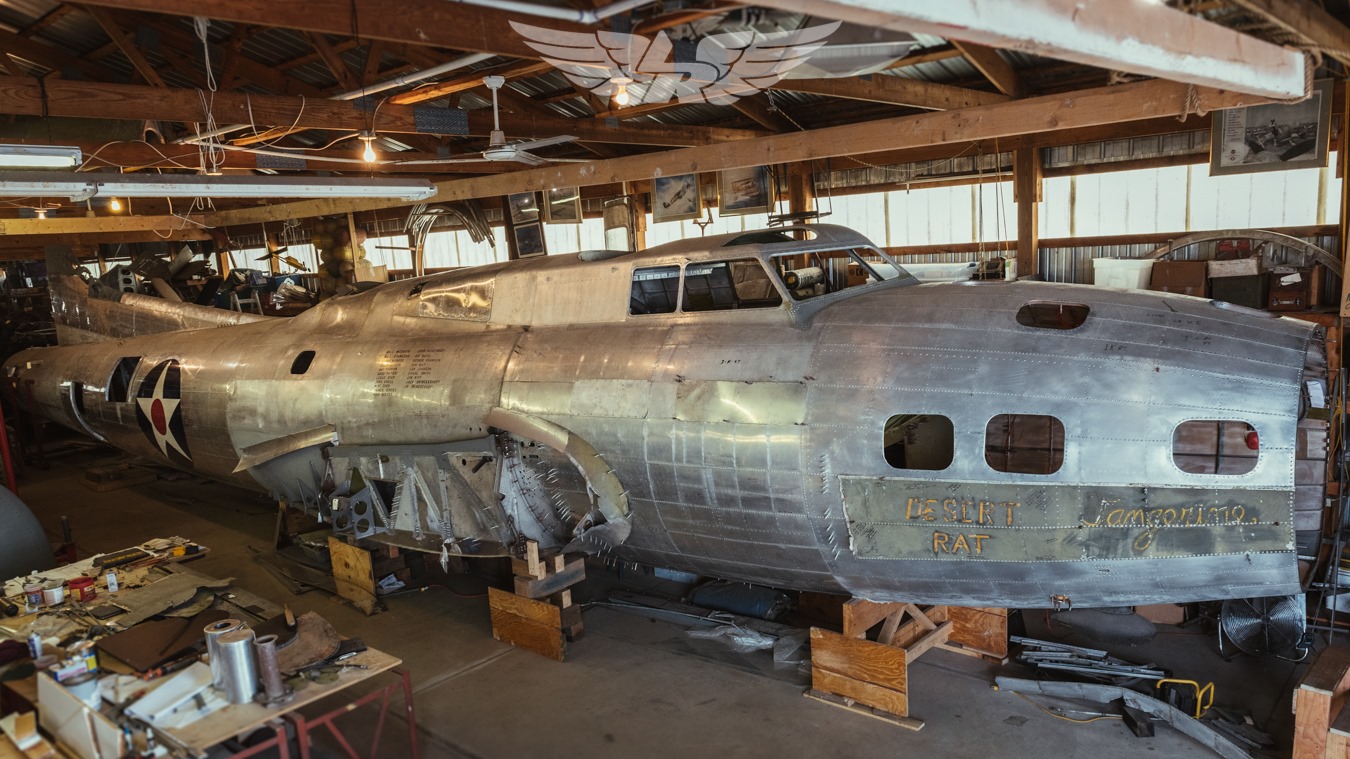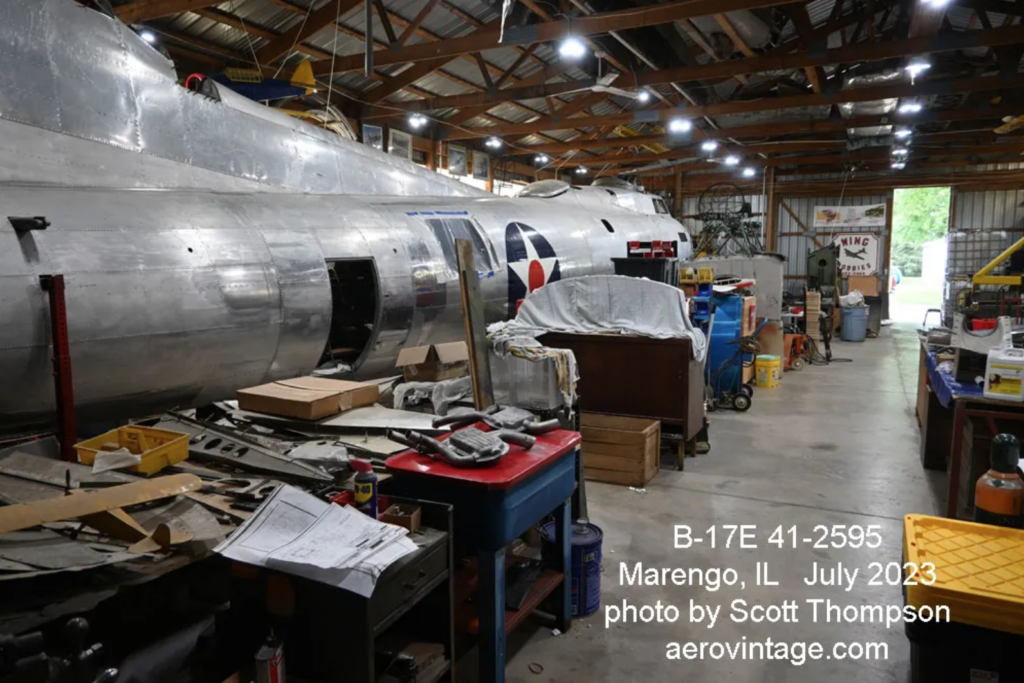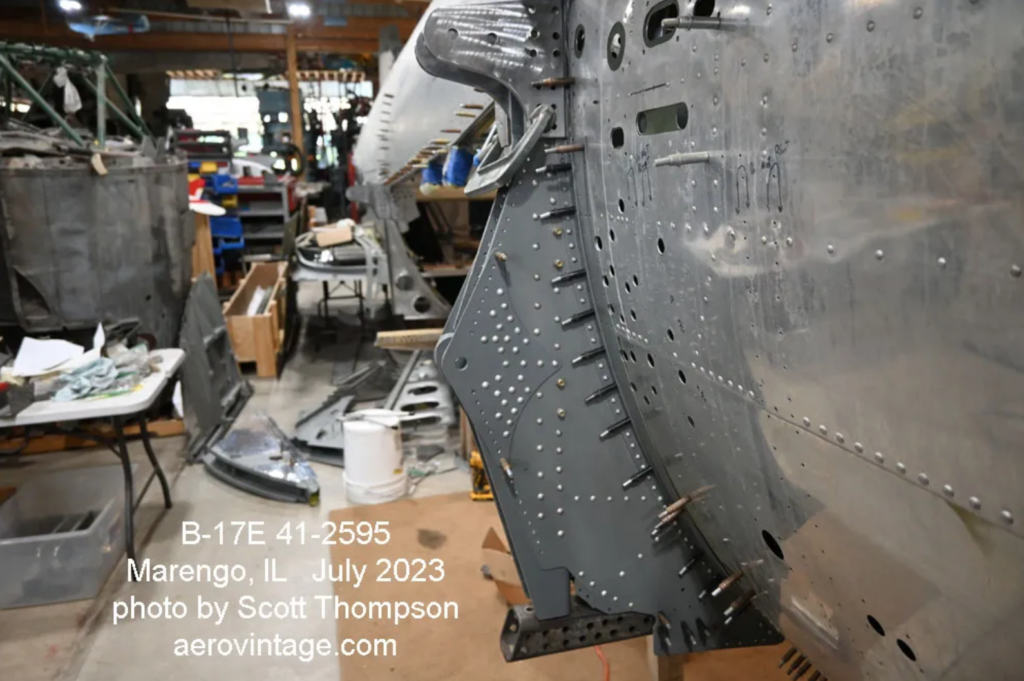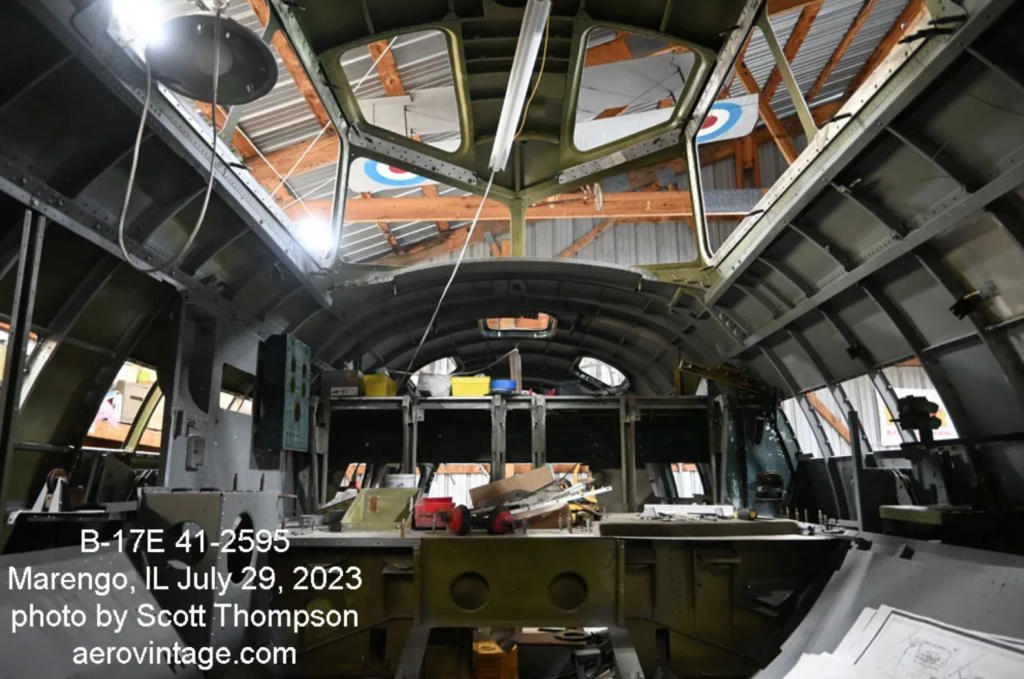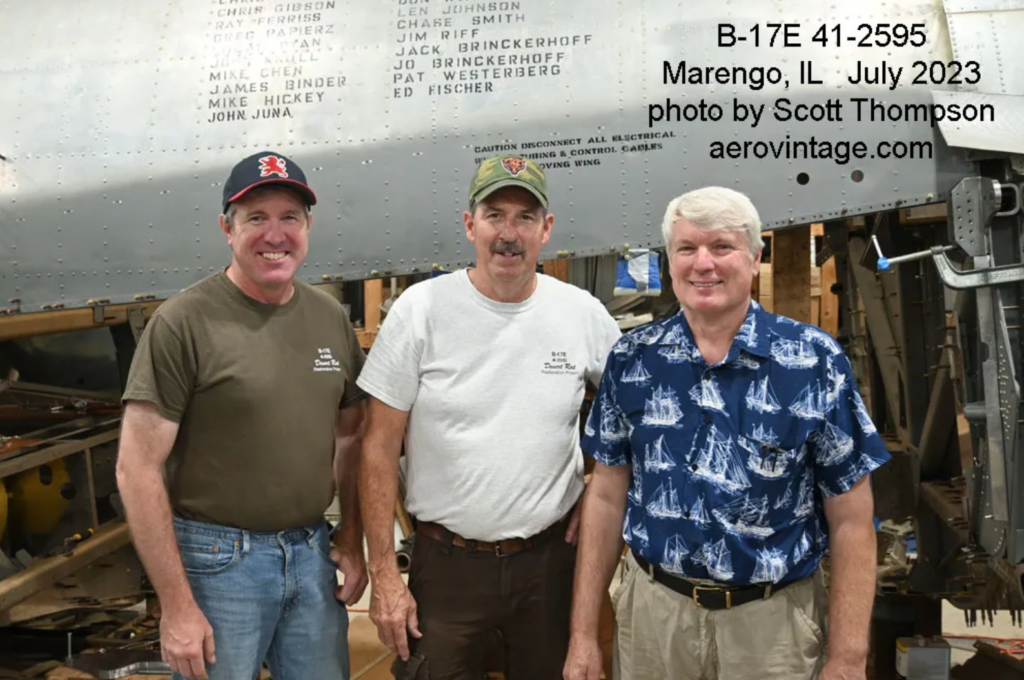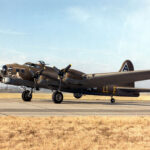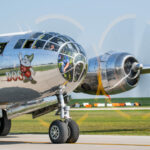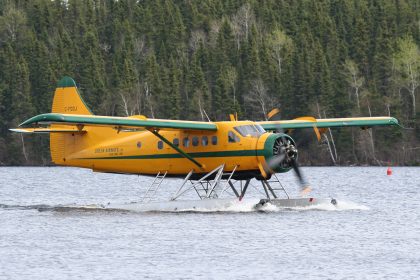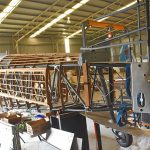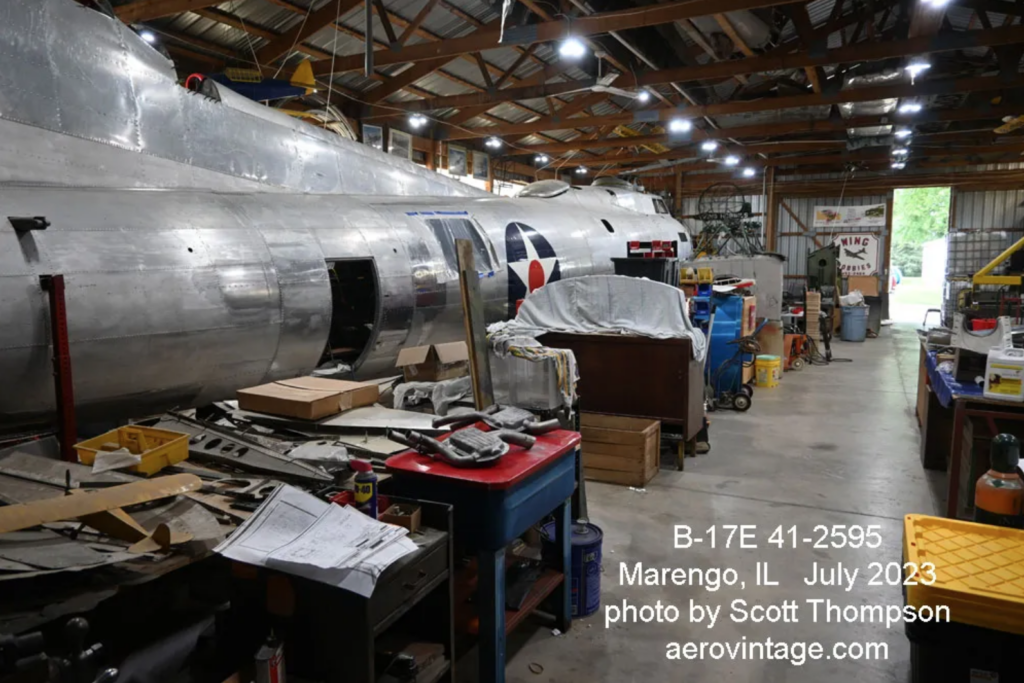
The restoration crew at Marengo, Illinois, working to restore B-17E 41-2595 (otherwise known as Desert Rat) continues to make steady, if slow, progress on the challenging effort. For those not familiar, this rare B-17E was recovered from a remote farm in Maine way back in 1985 by current owner and team leader Mike Kellner. It was in terrible shape, having been subjected to an unsuccessful but damaging attempt to scrap the bomber. Now, jump forward through four decades and the airplane is slowly coming back together in airworthy condition in a purpose-built building in rural Illinois.
The restoration started in earnest around 1993 or so, and the first and most ambitious challenge was to structurally rebuild the fuselage after it was cut into pieces earlier by those seeking to turn it into scrap. Also, there was a large, non-standard fuselage cargo door added when this particular B-17E was modified by the AAF to become the sole XC-108A, and that cargo door had to be removed and the structure replaced. This structural work required manufacturing many new and specialized longerons and formers to replace those cut, and jigging the fuselage so things would line up properly. All that work on the fuselage structure was completed several years ago.
For those who have watched the effort in recent years, progress is not readily apparent but, in fact, much work has actually been accomplished. In particular, the complex airframe structure around the ball turret is completed, as is most of the restoration of the camera bay located forward of the ball turret and aft of the bomb bay. The work effort by Kellner and his all-volunteer crew is now focused on the important carry-through structure in the bomb bay which consists of, among other parts, the wing attach points. New steel tubes had to be extruded to exact Boeing specifications and carefully installed in place of the old, unairworthy tubes. This is exacting work because the tubes hold the terminal fittings that will mate to the B-17 inner wing sections. Being off an eighth of an inch just won’t fly later when trying to attach the wings. As the photos show, new terminal fittings on the fuselage side are being installed. Most of the components to complete the bomb bay section are now available, and the parts are being fitted and riveted back into position. After the carry-through structure is completed, the bomb bay catwalk is built and ready for installation. After that, it will be bomb racks and bomb bay doors plus the actuating mechanisms…the list, it turns out, is pretty much endless.
After the fuselage structure is completed, the cockpit area will need to be reinstalled. At some point in the future, the electrical and other systems will need to be recreated and installed as per the original Boeing specifications. The wings recovered from the field in Maine are eventually going back into this airplane. They have received some work, but attention has primarily been on the fuselage over the past few years. One of the wing’s inner sections has been stripped out for cleaning and evaluation. The two outer wing panels have had the skin removed in jigs and will be reskinned as time allows. There are four engines present, but all four will need overhauls, as will the propellers.
As can be seen, this restoration effort remains a monumental task. Mike Kellner and his small volunteer crew are devoted and spend many days each week working on the small pieces that gradually become the big pieces. As in any such restoration project, finances and labor are the challenges. If you live in the area around Marengo, Illinois, which includes the greater Chicago and Rockford areas, and have some talent, experience, or just enthusiasm, Mike would like to talk to you. Perhaps contact Mike via email. Many parts have to be created from drawings or pattern pieces, so someone with that skill set would be ideal.
Desert Rat also has its own dedicated Facebook page HERE which some of our readers may enjoy viewing too. If you wish to contribute to the restoration of this important aircraft, whether it be with parts, labor or cash, please contact the Desert Rat team HERE. Monetary donations can be placed HERE.
Many thanks indeed to Scott A. Thompson for allowing us to reproduce this article describing Desert Rat’s present condition… his book, Final Cut: The Post-War B-17 Flying Fortress and Survivors as well as other titles are the gold standard when it comes to the airframe history it describes!







